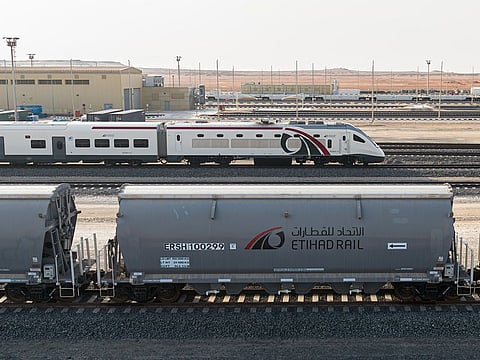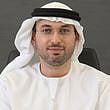The UAE’s acceleration towards greener transport
Nation leads the global charge in transforming transportation for a better, greener future

By driving a green transformation across each component of its transport mix, the UAE is highlighting how the world’s economies can decarbonise a key contributor to global emissions
The global transport sector is the fourth largest emitter of greenhouse gasses — approximately 15% of all emissions — making its decarbonisation imperative in the global agenda against climate change.
Unfortunately, only a few countries have included concrete targets to reduce transport-related emissions in their Nationally Determined Contributions, putting the goal of net zero emissions by 2050 to limit the global temperature increase to 1.5 degrees above pre-industrial levels at serious risk.
The UAE, however, is committed to leading the way in the decarbonisation of the sector, playing a crucial role by building a more sustainable and resilient transport system with new investments, advanced infrastructure and innovative projects.
The UAE has been steadfast in its commitment to build a railway network in the country that provides faster and cleaner mobility options. Through the support of the President His Highness Sheikh Mohamed bin Zayed Al Nahyan, under the “Projects of the 50” initiative, established by the UAE Government, The UAE Railway Programme, stands as the largest integrated system for transporting goods and passengers across the country.
Sheikh Theyab bin Mohamed bin Zayed Al Nahyan, Chairman of Etihad Rail, has been a driving pillar in shaping the introduction of this new industry into the country’s transportation mix, with his foresight on rail’s socioeconomic benefits, especially around decarbonisation, which has served as a guiding light on how to shape the future of the railway sector to serve the UAE.
With the inauguration of the 900km-long UAE National Rail Network, in February 2023, it marked the start of freight services throughout the country, having already operated freight services since January 2016, in the Al Dhafra region.
Rail is widely renowned globally as one of the most sustainable modes of transport globally, and in the UAE that blueprint is no different, currently a single train can remove up-to 300 trucks from the road. Subsequently this is just the beginning of what rail can achieve, by 2050, it will reduce CO2 emissions in the UAE road transport sector by 21% per year, which is equivalent to removing 8.2 million tonnes of CO2 annually.
Track record of success
Etihad Rail is already stimulating the emergence of several initiatives that guarantee this contribution to decarbonisation is achieved. For example, striking an agreement with Oman Rail to connect both countries, passenger services across the UAE, and the deployment of green solutions for first, last mile services, ensure end-to-end journeys are sustainable.
Building on a track record of success, from both the completion of a nationwide rail network, and the launch of freight services, Etihad Rail received a green financing loan for Dh1.99bn, to start the development and readiness of passenger services, further adding to rail’s mandate and contribution to the UAE’s vision for green transportation.
Meanwhile, the Dubai Metro has proven to be a paradigm shift in regional transport since it was launched in 2009. In just over a decade after it began services, the world’s longest fully automatic driverless train system had already curbed more than 2.6 million tones of emissions by converting more than a billion private car journeys to public transport.

Currently spanning 75km, there are plans for a new 30km Blue Line, which will significantly expand its reach, while providing sustainable transport options to residents and tourists, per the Roads and Transport Authority. In line with the Dubai Clean Energy Strategy, and the national goal to become fully net-zero by 2050, its stations are being outfitted with solar panels to generate nearly 10MW of power to support its operations.
Earlier this year, Dubai Government also revealed its plans to have net-zero emission public transport by 2050 in line with the national net-zero emission targets, which would result in reducing carbon emissions by 10 million tonnes and enable it to save AED3.3 billion.
Enhancing safety and sustainability
Abu Dhabi is also implementing plans to reduce carbon emissions across its public transport network, having introduced low-emissions electric buses to shuttle residents and tourists between Yas Island and Saadiyat Island, whilst additionally trialing TXAI’s robotaxi’s since 2021 enhances the safety and sustainability around travel within these populous areas.
RTA also disclosed that Dubai will also make its taxi fleet completely eco-friendly by 2030, as part of plans to decarbonise all taxis, limousines, and public buses with near zero consumption, and sourcing energy from renewable sources. The emirate also plans to convert 10 per cent of its public buses into electric and hydrogen vehicles by 2030, expanded to 20 per cent in 2035 and increase to the entire fleet by 2050.
In the aviation sector, the UAE’s airlines are committed to meet their net zero goal by 2050. Etihad Airways is continuing to explore operating flights on a 40 per cent blend of sustainable aviation fuel (SAF), while Emirates Airlines, the world’s largest international airline, has operated a milestone demonstration flight, the first in the MENA region, powered 100 per cent by SAF.
The airline has also announced a $200 million fund for the production of SAF. Additionally, both airlines have joined a UAE-led consortium Air-CRAFT to research renewable and advanced aviation fuels.
UAE leadership’s vision
Similarly, Dubai and Abu Dhabi airports are enhancing infrastructure to reduce carbon emissions.
Dubai International Airport, the world’s busiest, has replaced 150,000 light fixtures across its terminals and airfield with more efficient LED lights, and has introduced electric and hybrid ground service vehicles to support the decarbonisation of its operations. The airport has also installed 15,000 photovoltaic panels in Terminal 2, which will reduce carbon emissions by more than 3,000 metric tonnes.
Abu Dhabi Airport’s recently opened Terminal A, which has doubled its capacity to make it capable of handling 45 million passengers annually, is rated Pearl 3, the highest sustainability rating for buildings of its size. The terminal was designed to require 45 per cent less water in its operations, while more than 7,500 solar panels power a 3MW plant, saving 5,300 tonnes of carbon emissions.
By demonstrating an unwavering commitment to sustainability across its entire transport network, the UAE is gaining momentum towards achieving its net zero by 2050 goals and highlighting how other economies can pursue an accelerated rate of development while balancing the transition to a more robust, resource-efficient and competitive green economy.
These are just some of the examples, that showcase the UAE leadership’s vision to ensure an accelerated route to green transport is achieved; via both the infrastructure that connects, and the mobility solutions that serve the country are interwoven. This signifies a substantial shift of mindset and culture, that is being instilled across the country, led by the UAE Government.
The innovative solutions being presented, are tangible outcomes of how the thought process has evolved, all with the goal of building a sustainable future. This alteration in behaviour, positions the UAE as a leader and beacon for sustainability within the transport and logistics sectors.
Shadi Malak is the CEO of Etihad Rail
Sign up for the Daily Briefing
Get the latest news and updates straight to your inbox



